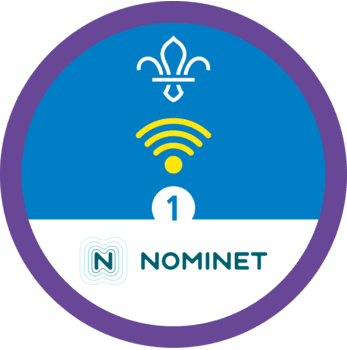
Meet and greet
You’ll need
- Scissors
- Bowls
Before you begin
- This improvisation activity challenges everyone to think quickly and adapt the way they communicate depending on who they’re talking to.
- Cut up the ‘Meet and greet cards’ and place the characters and topics in two separate piles or two bowls labelled A and B. If the group is large, make two sets.
Who do you think you’re talking to?
- The person leading the activity should start a conversation about the way we talk to different people both in real life and online.
For example, you might use different words, phrases and ways of speaking when talking to your friends or your teacher or a potential employer.
- Everyone should get into pairs and label themselves A or B.
- Person A should take a character from the first bowl or pile and person B should take a topic from the second bowl or pile.
- The person leading the activity should give each pair a few seconds to think about what they’ll say and how they’ll respond in character and then give them a short amount of time to have a conversation.
The person leading the activity could also ask one pair to demonstrate how the game could work so everyone gets the idea. For example, if addressing the King you might say ‘Your Majesty’ or ‘Sir, and if addressing your best friend you might say ‘mate’ or something similar.
- Pairs can swap people and topics or replace them in the pile and take a new one.
- Pairs should swap around until everyone has had a chance to play a range of characters.
- The pairs could end the game with a few demonstrations, and then everyone could applaud one another.
The digital difference
- Everyone should find a partner and chat about how they found the game. Was it easy interacting with all the different characters?
- Ask the pairs to join others to form small groups. Everyone should discuss how people from different backgrounds interact online.
- Just like when we’re talking face to face, sometimes we have to change the way we interact with people online too. Groups should think about how they might act differently because of any differences they thought of above.
- Share the main points from the discussion with the whole group.
Reflection
This activity highlighted how often we change the way we communicate depending on who we’re talking to. The person leading the activity could ask the group if there were any funny or silly conversations they had to have. Did anyone have to explain the plot of their favourite game to the King or a tricky maths problem to an angry person? Remind everyone that sometimes online we forget that there’s a real person behind every online profile and that we may have to slightly change the way we interact with people just as we do face to face.
Everyone should remember to always do a self-check: if that person was standing in front of me, would I say the same thing to them that I write online? Ask what might happen if we used the same tone for everyone online? How might that angry person or the potential employer react? Remind everyone that they all have a traceable digital footprint and it’s good to stop and pause for a moment or longer before posting anything. If not sure, hold back and wait overnight or talk it through with a trusted adult.
Safety
All activities must be safely managed. You must complete a thorough risk assessment and take appropriate steps to reduce risk. Use the safety checklist to help you plan and risk assess your activity. Always get approval for the activity, and have suitable supervision and an InTouch process.
- Active games
The game area should be free of hazards. Explain the rules of the game clearly and have a clear way to communicate that the game must stop when needed. Take a look at our guidance on running active games safely.
Make the game faster by asking the players to make two circles, one inside the other with players facing each other. The outer circle is topics and the inner circle is characters. At ‘go’ the pairs connect and have their conversation and then at ‘next person’ the outer circle moves one space to their right and has a conversation with a new character. The person leading the activity should give each pair only 20 or 30 seconds before moving on.
Make sure everyone can take part using whatever form of communication they use. You could also adapt the characters and situations in the game to include ideas like ‘someone who uses BSL to communicate’.
All Scout activities should be inclusive and accessible.
Use the game as a basis to create a group guide about how to interact respectfully online. People could use humour to make a serious point. For example, when talking to the King, please don’t call her ‘mate’ or give her a hug. In fact, don’t call anyone ‘mate’ unless they actually are your friend in real life. If you’re trying to explain something to some who’s very angry you probably won’t get very far. Don’t argue with them, just walk away.
Everyone can make up their own characters and topics depending on their own experiences.
